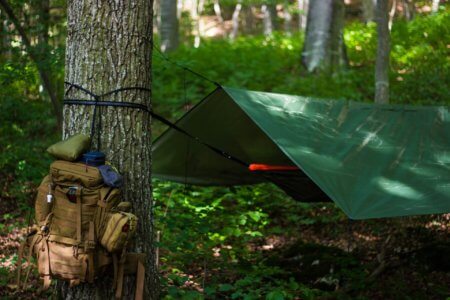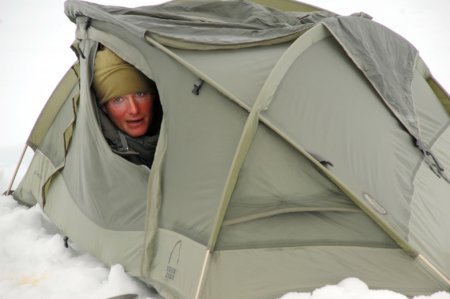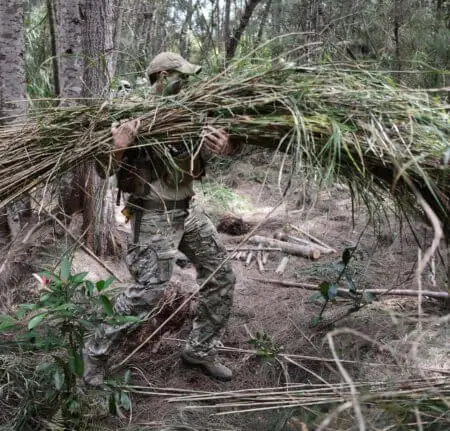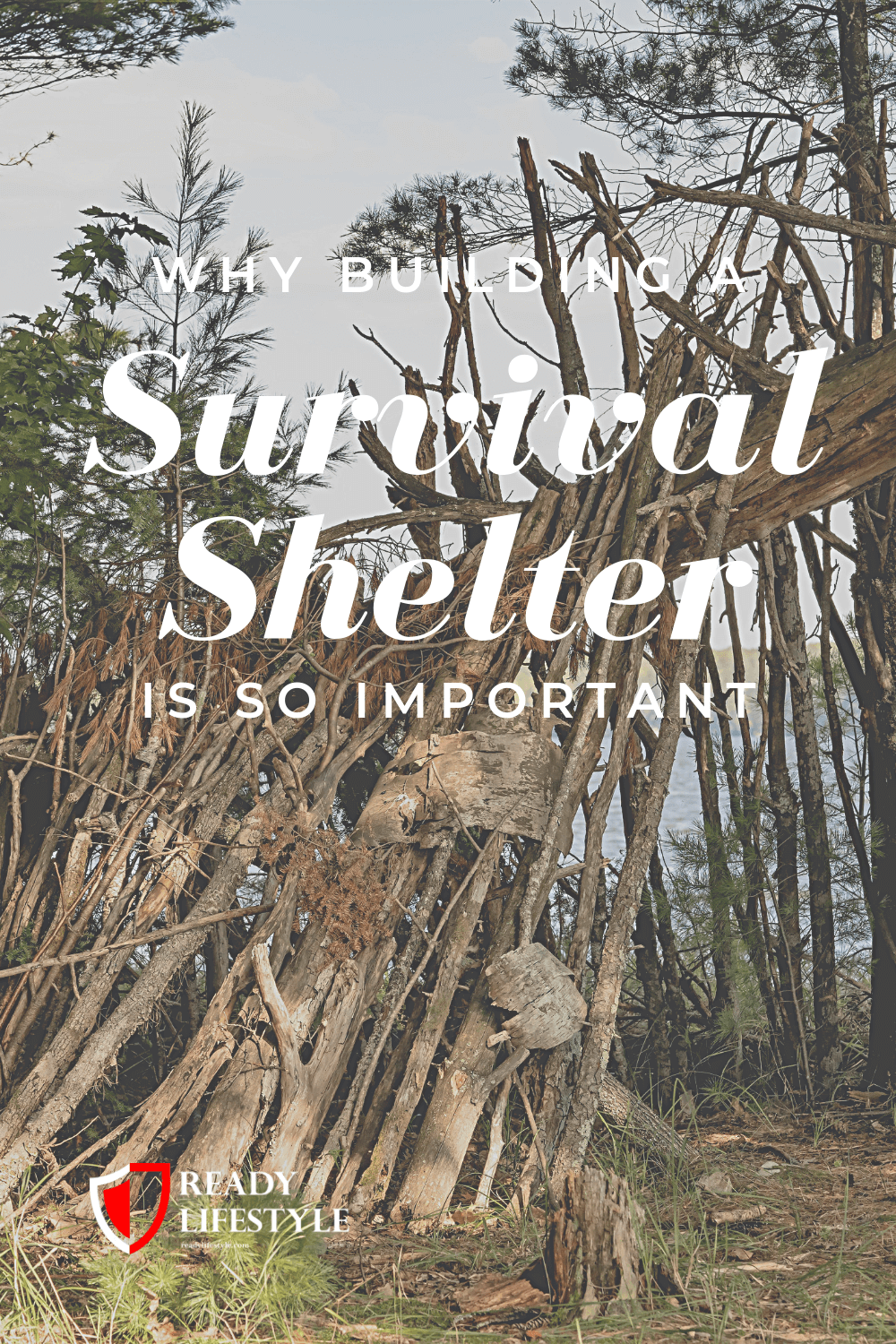Why Should You Build a Survival Shelter?
Building a survival shelter is one of the things that everyone is always discussing. It doesn't matter is it's warm, cold, or in between, there's someone out there talking about how to build a shelter for that type of environment. But why?
Why should you build a survival shelter? Shelter is one of the most important things for survival. Depending on where you are it can even take precedence over finding food and water. It keeps your body at its proper temperature and protects you from the elements, animals, and insects around you.
[wc_toggle title="Table of Contents" padding="" border_width="" class="" layout="box"]
[/wc_toggle]

Why is Shelter Important for Survival?
Exposure is one of the leading causes of death when people find themselves stuck in a survival situation.
Hypothermia is at the top of the ways that expose is fatal. As hypothermia sets in, it becomes more and more difficult for you to think and reason through the problems that you're facing. Eventually, your body temperature drops to a point that that you lose consciousness and die.
Hypothermia can occur in all seasons, not just during the winter of in a cold climate. Once you get wet and exposed to the wind, hypothermia can set in quickly.
Heatstroke is the opposite of hypothermia and can kill almost as fast.
Heatstroke is a condition that occurs when your body overheats and your core temp rises to 104 degrees Fahrenheit or higher. It’s usually associated with major exertion in high temperatures and follows heat exhaustion when it goes untreated or unrecognized.
Heatstroke is a serious medical emergency and requires immediate medical care. Failure to lower your core temp with quickly lead to damage to the brain, kidneys, muscles, and heart.
A shelter protects you from the sun, insects, wind, rain, snow, hot and cold temperatures and even observation from enemies. One often-overlooked advantage provided by shelter is that it can give you a sense of well being that can keep up your will to live.
Survival Shelters in Different Climates
Different climates have different hazards that you need to protect yourself from. Keep these guidelines in mind when selecting your shelter in different weather.

Survival Shelters in Cold Weather
In cold weather, you need to get to shelter as soon as you can. The shelter should be able to protect you from the wind and trap your body heat as much as possible.
Survival Shelters in Hot Weather
Shelters built in hot temperatures need to protect you from the sun and wind so they can help prevent dehydration and heatstroke.
In severely hot weather, you should look for shelter right away and not waste time wandering around. It's more important to preserve the water you have in your body than it is to look around for more. Once the sun gets low and temperatures drop you can go out looking for water.
Survival Shelters in Moderate Weather
Moderate temperature shelters are some of the easiest to find or build. They don't really need to be built for any extremes so you have a lot of options open to you.
As long as your shelter is at least somewhat waterproof and can keep the wind off of you, it's doing everything that it needs to do.
Survival Shelters in Different Environments
The type of shelter that you're going to want changes depending on the environment that you're in. Not all survival situations are the same or require the same thing.
The environment is also where you're going to find most of your building materials. This is going to drive the type of shelter that you build more than anything else.
Survival Shelter in the Desert
Finding shelter is considered more important than finding water or food if you're stuck in the desert. Getting out of the sun and wind is one of the best ways to stop yourself from getting dehydrated as quickly as you otherwise would.
A simple desert survival shelter can be made with a poncho or tarp. Just anchor one end of the poncho on a rocky outcropping using sand or rocks. Then support the other end off the ground with sticks to create a shady area. This area needs to be large enough to allow you to lay down comfortably.
If you have enough material, double the poncho over and keep an 18" gap between the two sides. This air gap will lower the temperature under the poncho.

Survival Shelter in the Jungle
Most of the time in the jungle you're going to be in temperatures that are warm enough to where hypothermia isn't an issue. You're also likely to have plenty of places to get out of the sun under the jungle canopy. So why build a shelter?
In the jungle, you're going to want to build a shelter to help keep you dry and keep you off the ground while you sleep.
Finding the materials to build a simple lean-to should be easy. Try to build a bedlike structure inside to get you up off the ground and out of the direct path of insects, snakes and other ground animals. If you can't get off the ground, it's not the end of the world. Just know that you'll likely get some unwanted visitors.
Survival Shelter in the Mountains
Shelter in the mountains is a definite necessity. It can get brutally cold, windy, rainy, and snowy but it's even important if the weather is decent.
Lean-tos, teepees, debris huts and pretty much all other types of shelter are good for the mountains. It really just depends on the materials that you have around you.
One of the best ways to improve these shelters is by building a fire outside the door and then making a wall on the opposite side of the shelter to reflect some of the heat into your shelter. This simple addition saves a ton of heat that would otherwise get lost.
Survival Shelter in the Arctic
Shelters in an arctic survival situation are probably the most important. You're at immediate risk of falling victim to hypothermia if you're stuck in an arctic area.
Snow shelters make the most sense to me in these situations. A snow cave is going to be the easiest for you to build and require the least amount of effort, tools, and materials.
Start with a snowbank and begin digging as low as you can. Dig up into the snowbank making a bell-shaped opening at the top. This traps the warm air inside and lets the colder air escape out the entrance.
Regardless of what type of shelter you decide to build, you should always build it as small as possible. This allows your body heat to warm the shelter faster and more efficiently.
Related Questions
Do you always have to build a survival shelter? No, it's going to depend on the environment and what your goals are. If you plan on continuing to move and taking very few breaks, you may not want to build a shelter. However, it's almost always a good idea to build a shelter in a survival situation.
Why Building a Survival Shelter is so Important is available on: www.readylifestyle-staging.gtgrgq9c-liquidwebsites.com

Comments
Post a Comment